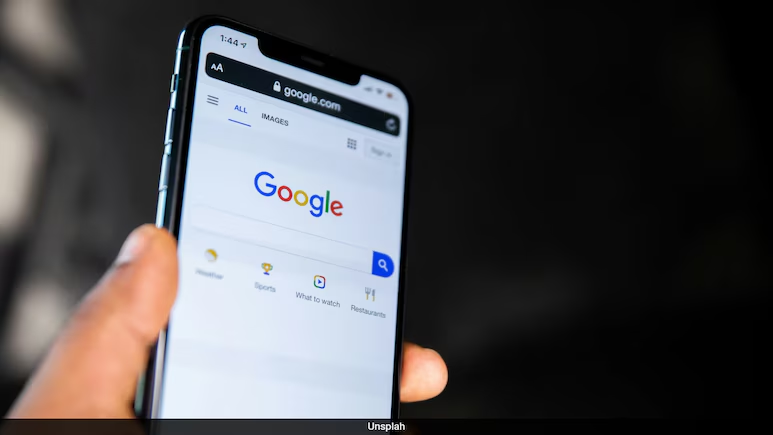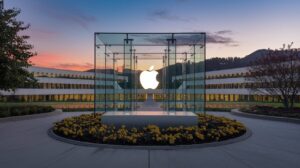Google Turns 27: A Nostalgic Tribute and a Bold Future Ahead
Google celebrated its 27th birthday on September 27, 2025, ushering in a wave of nostalgia by reinstating its original 1998 wordmark as a special homepage doodle. The symbolic gesture reminded users of Google’s humble beginnings, while also providing a bridge into its current ambitions in AI, cloud computing, and digital infrastructure.
A Logo Revisited: The 27th Birthday Doodle
Google’s official Doodle for its 27th birthday features the very first logo from 1998, recreated to evoke that early era of exploration and experimentation. The doodle description itself states:
“Let this vintage logo transport you back to the ’90s and teleport into the future by checking out Google’s newest AI innovation.” Google Doodles
This throwback is intentional — Google is signaling that, while it has grown massively, its mission is still anchored in its original vision: organizing the world’s information and making it universally accessible. The doodle’s revival also helps humanize the brand, reminding users of the journey and milestones that led to the Google we know today.
In addition to the doodle, Google has offered discounts, promotions, and cashback on Pixel devices and other services to mark the occasion — a subtle nudge encouraging users to engage with its ecosystem.
The Date Question: Why September 27?
While many assume Google was born on September 27, the official incorporation date is September 4, 1998. Over time, the company shifted its celebratory date to September 27, a change often attributed to a significant scaling milestone in the size of its web index around that period.
In fact, Google has experimented with different birthday dates in its early years (September 4, 7, 26, even 27), and doesn’t appear to have a single definitive “birth day” that is universally recognized. The consistency of using September 27 since the mid-2000s has made it the de facto “Google birthday” in public consciousness.
By anchoring celebrations to September 27, Google aligns its brand narrative and gives media, users, and partners a stable reference point to anticipate and recognize.
From BackRub to Google: The Origin Story
The inception of Google traces back to a Stanford research project built around ranking web pages using link structure. That project was originally named BackRub. As co-founders Larry Page and Sergey Brin refined their vision, they realized the name BackRub lacked the grandiosity for what they sought to achieve.
They adopted “Google”, a playful misspelling of the mathematical term googol, which represents the digit 1 followed by 100 zeros — a metaphor for the massive scale of information they aimed to manage. That slight shift in spelling inadvertently created a unique, memorable brand — and set the stage for how we invoke “Google” as a verb today.
The first rounds of funding, including a $100,000 check from Sun Microsystems alumni Andy Bechtolsheim, allowed Page and Brin to rent a very modest garage in Menlo Park, California — a fitting origin for what became a tech titan.
Fast forward to today, and Google is merely one arm of a broader conglomerate, Alphabet Inc., spun off in 2015 to better structure its core business and “Other Bets” like Waymo, Verily, and DeepMind.
The Art and Strategy Behind the Logo
While the 27th birthday revived the 1998 wordmark, the original design bears its own fascinating story — one tied to a Stanford professor. Ruth Kedar, a Brazilian-born designer and academic, was commissioned by Page and Brin to conceive a visual identity for their startup.
Kedar selected the Catull typeface, which struck a balance between classical letterforms and contemporary quirks. She intentionally used primary colors for vibrancy and memorability, with the exception of the green “L” as a subtle nod to the playful unpredictability of search.
Over time, Google’s logo has evolved under Kedar’s foundational direction — shifting from serif embellishments and drop shadows to flat, cleaner forms, and eventually making room for minimalist and responsive adaptations suited for mobile and dynamic contexts.
Moreover, the concept of Google Doodles has grown from that earliest design into a full-fledged cultural practice — turning the logo into a canvas for commemoration and storytelling.
Evolution & Milestones: 27 Years in Review
Growth in Valuation and Influence
From its modest IPO in 2004, when Google raised nearly $1.7–1.9 billion, the company has progressed to becoming a multi-trillion-dollar enterprise. Its parent company, Alphabet, recently hit a market capitalization milestone of $3 trillion in 2025, fueled by momentum in advertising, cloud services, and AI. ET Now
Google has also evolved beyond search — building global dominance in mobile (Android), video (YouTube), mapping (Google Maps), productivity (Workspace), smart devices (Pixel, Nest), and foundational AI technologies (Gemini, Google Brain).
Cultural & Product Impact
One of Google’s most outsized achievements is transforming “Google” into a verb — synonymous with “search.” Its Doodles have also become a signature — celebrating holidays, scientists, cultural icons, and local events worldwide.
Under CEO Sundar Pichai, Google has doubled down on AI, quantum computing, and cloud-first strategies. As the company approaches its 30th anniversary, these technologies are expected to define its trajectory into the next decade.
Looking Ahead: Google at Age 30 and Beyond
The celebration of 27 is more than nostalgia — it’s a moment to refocus on the future. Google is positioning itself as a cornerstone of tomorrow’s computing paradigm, especially through AI and decision-making systems. The Federal
As the company ponders its 30th birthday in 2028, expect more ambitious integration across its product ecosystem: search infused with AI, smart assistants that go beyond context, and even deeper sync between cloud, mobile, and IoT.
The revival of the vintage logo in 2025 subtly suggests that, even as the form evolves, Google remains committed to its origin story: curiosity, experimentation, and organizing our collective information.
Final Thoughts
With its 27th birthday, Google managed to blend history with future — bringing back its original logo to honor its roots, while simultaneously casting a vision for what comes next. From the Stanford dorms and a modest garage, it has grown into a global force that shapes how billions connect, learn, and explore.
Subscribe to trusted news sites like USnewsSphere.com for continuous updates.





